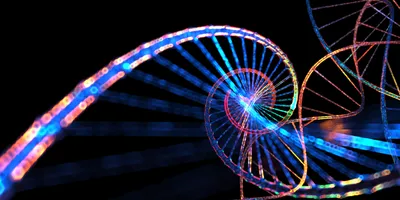Bellal Moghis, director of genomics product management at Agilent Technologies, explains how automation is reshaping targeted next-generation sequencing (NGS) workflows—from inherited disease panels to cancer panels—by making library prep more consistent and accessible.
Q: What are the pain points of running targeted enrichment?
A: Target enrichment helps labs focus their sequencing resources on genome regions where coverage matters most. Instead of scanning the whole genome, they concentrate on specific genes or variants tied to disease. Agilent helped pioneer this approach more than a decade ago with its SureSelect platform, which now underpins thousands of published studies across cancer, inherited disorders, and infectious disease.
The chemistry isn’t the problem. It’s the process. A typical manual library-prep and target-enrichment workflow can eat an entire eight-hour shift. You’re pipetting every step, staying vigilant. And in labs with tight turnaround or rotating staff, that’s hard to sustain.
Sequencing keeps getting faster, and though targeted enrichment protocols have shortened overtime, the process is still manual and skill-dependent.

Bellal Moghis
Q: What is the Agilent Magnis NGS Prep System?
A: The Magnis system automates the entire SureSelect prep workflow, from DNA or RNA to sequence-ready library, with about twenty minutes of hands-on time. Labs load their plates, start the run, and let it finish without interruption. The system handles custom and catalog panels across several sample types including FFPE samples and liquid biopsy.
Other automation platforms may still require some manual steps or take up bench space with large-footprint instruments. Magnis was built differently. It delivers consistent prep across sample types with a compact design conducive to labs of all sizes.
For labs under pressure to reduce turnaround time or onboard new staff, the value is simple: a repeatable process that’s easier to run. Whether the input is cfDNA, FFPE, or high-quality gDNA or RNA, the system processes these samples on the SureSelect panel of your choice.
Q: What specific problems does Magnis solve in traditional NGS workflows?
A: Labs running oncology, inherited disease, or infectious-disease assays for research purposes often face pressure to reduce turnaround and maintain consistency across samples and staff. Magnis supports those goals by removing variability from the targeted enrichment process. Each run follows the same protocol, regardless of operator or sample type. That helps labs shift from outsourced or high-skill prep toward a more standardized, in-house approach.
Q: Why does automation matter more in assays like liquid biopsy and FFPE?
A: Liquid-biopsy and FFPE samples often contain very little DNA, which is a challenge as often these samples are associated with applications that require high sensitivity. User errors or imprecise processing of samples can impact sensitivity. An automated system that minimizes, and even eliminates, errors can help maintain high sensitivity.
The Magnis runs the full SureSelect protocol without interruptions. No mid-run handling means less chance of sample loss, and each run follows the same conditions regardless of who starts it. That level of control supports consistent performance in assays such as tumor profiling, where input is limited and sensitivity is critical for variant detection.
Q: Where does Magnis fit in labs already using SureSelect panels?
A: Magnis runs both catalog and custom SureSelect panels, covering applications from whole exomes to focused tumor assays. Most labs already using SureSelect chemistry can run the same panels on the Magnis system using the same enrichment logic in an automated format.
Some labs run the Magnis system alongside the Bravo system, Agilent’s high-throughput liquid-handling platform. The Bravo system handles large batch samples, while the Magnis system supports scenarios where labs may not want to wait for large batches to accumulate.
One group, for example, is building a pan-hematologic panel on the Magnis system, intended to meet CAP/CLIA and New York State requirements. That kind of setup gives smaller labs access to automated enrichment workflows without building them from scratch.
Q: How do labs integrate new panels into automated enrichment workflows?
A: Custom panels are user-defined designs produced by Agilent, letting labs target any gene set without changing the automated workflow.
While the content menu of the Magnis system continues to expand, so are the capabilities. Agilent will soon offer the new Avida liquid biopsy chemistry with methylation capabilities on the Magnis system.
Similar to SureSelect, the Magnis system will enable full automation of the Avida chemistry, allowing labs to not only detect DNA variants in liquid biopsy samples but also methylation variants that help provide additional insights.
Q: What advantages does targeted NGS offer as whole-genome sequencing becomes more common?
A: Whole-genome sequencing is expanding, but targeted enrichment still offers key advantages in performance and usability. Focused panels deliver higher coverage of relevant regions, faster turnaround, and less downstream complexity. That’s especially important in somatic assays, where the goal is to detect low-frequency mutations in a small amount of DNA. Sequencing a narrow region more deeply improves the chance of finding those variants—something broad, shallow genome scans may miss.
As automation improves access, enrichment becomes easier to standardize and scale. Panel menus continue to grow, including support for liquid biopsy and methylation. With consistent prep and evolving content, targeted workflows remain a practical fit for labs that need sensitivity, speed, and control.
Q: What defines success in targeted NGS today?
A: Informatics is where it all comes together. Even with good chemistry, you won’t get answers without the right pipeline. Success means aligning front-end prep with back-end analysis—hard to do, but when it clicks, that’s the reward.
For Research Use Only. Not for use in diagnostic procedures.
The MagnisDx NGS Prep System is for In Vitro Diagnostic Use.




